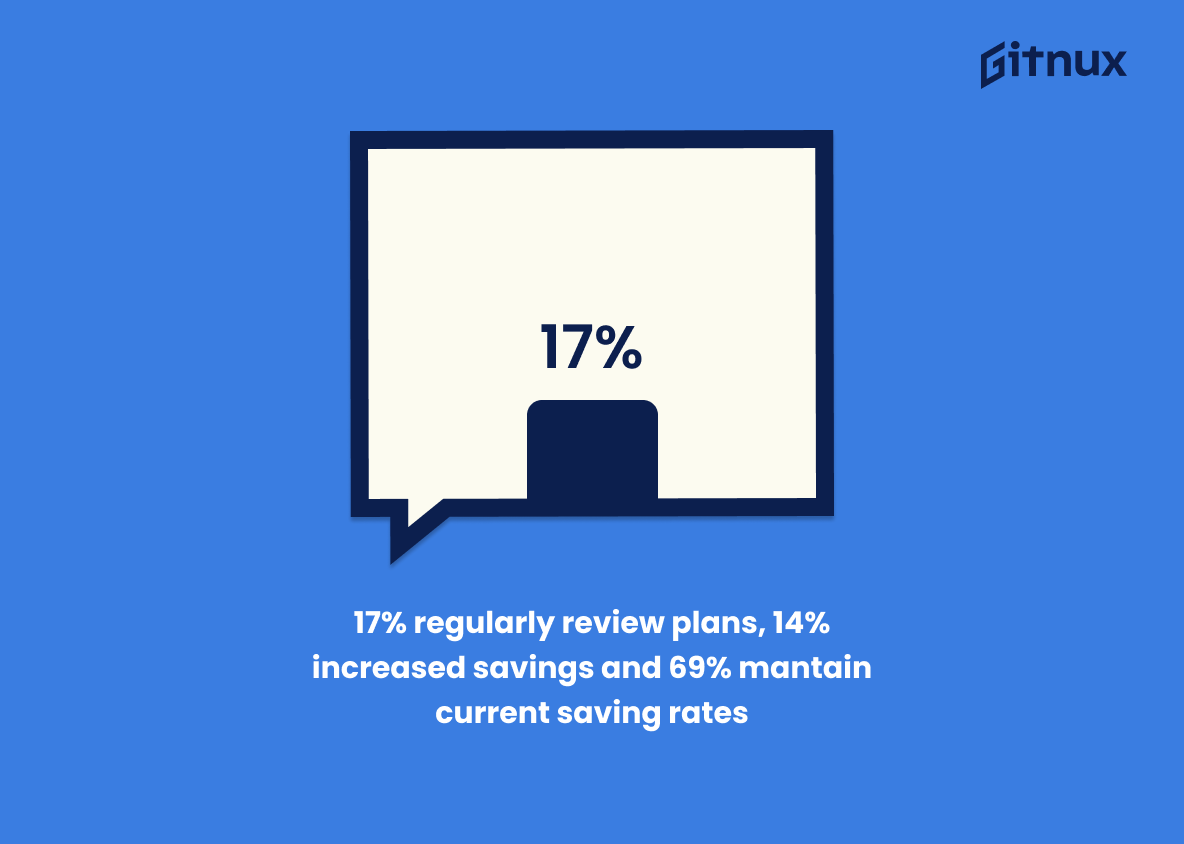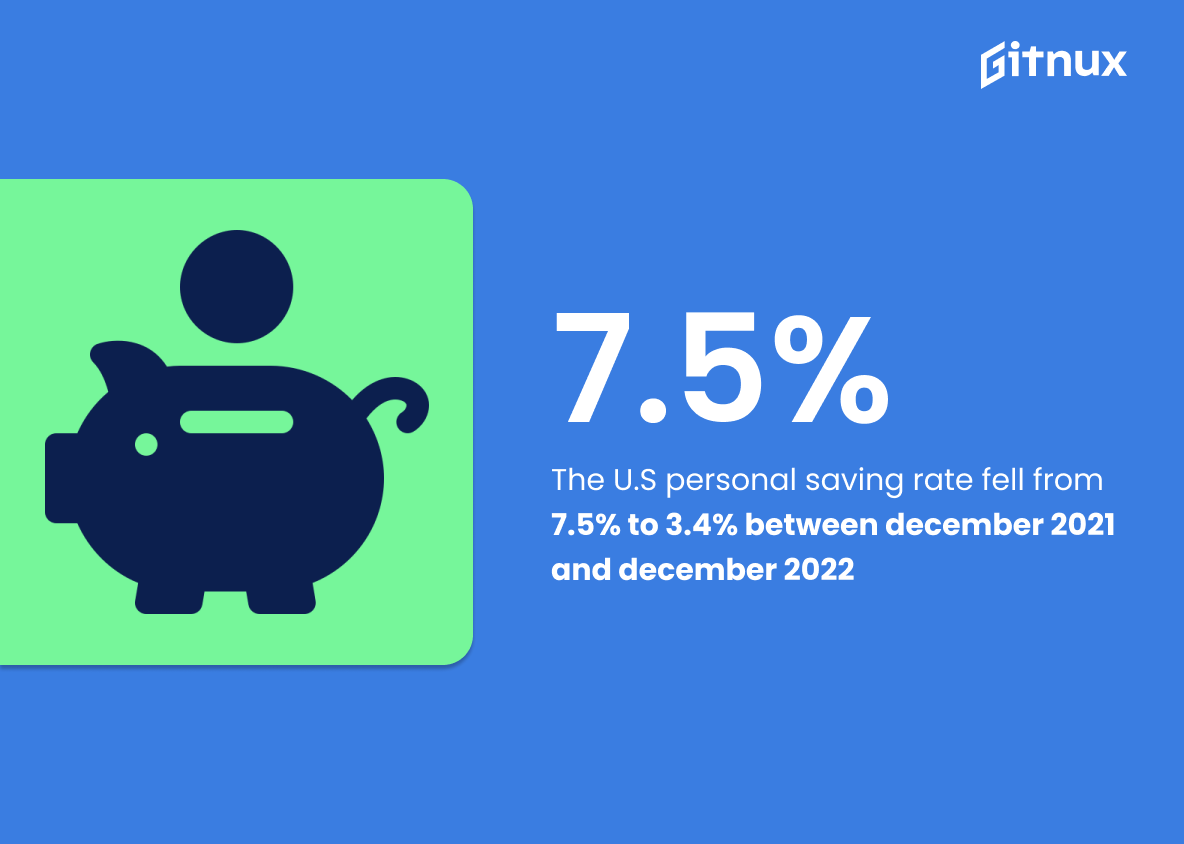Savings are an important part of financial security and stability. In the United States, the savings rate has been steadily declining for decades, and this trend has become increasingly concerning.
In this article, we will explore the current state of American savings and discuss the implications of this trend. We will also look at the various strategies that individuals and families can use to increase their savings rate and build a secure financial future.
American Savings: Most Important Statistics
17% of respondents are regularly revisiting their financial plans, 14% have increased their savings and retirement contributions, and 69% plan to maintain their current savings rates.
The personal saving rate in the US fluctuated significantly during the Covid-19 pandemic, peaking in April 2020 at 33.8% and returning to pre-pandemic levels of 2.3% in October 2022.
American Savings: Statistics Overview
42% of Americans have less than $1,000 in savings as of 2022, with an average savings account balance of $4,500 and an average U.S. savings rate of 8.96% between 1959-2022.
Despite an average savings account balance of $4,500, the majority of Americans have less than $1,000 in savings, indicating that many are not able to save enough to reach the average.
This statistic also indicates that the average U.S. savings rate has been relatively low over the past 60 years, suggesting that Americans have not been able to save as much as they would like.
17% of respondents are regularly revisiting their financial plans, 14% have increased their savings and retirement contributions, and 69% plan to maintain their current savings rates.
A significant portion of the population is actively trying to save money, either by increasing their savings or by regularly revisiting their financial plans.
Americans are becoming more aware of the need to save for their future.
68% of people contributed less than $5,000 to their savings last year.
This low rate of savings can have a negative impact on the economy and can lead to a lack of financial security for individuals.
32% of people want to reduce their debt, 26% want to save for an emergency fund, and 28% want to spend less.
Many Americans are conscious of their financial health and are taking steps to save money and reduce their debt. Americans are taking steps to become more financially secure and stable.
The 4% rule is a retirement planning tool that allows people to withdraw 4% of their savings in their first year of retirement and adjust for inflation each year without running out of money for at least 30 years.
This matters in the context of American Savings Statistics because it provides a guideline for how to safely withdraw money from savings without running out of money. This is especially important for retirees who rely on their savings to support their lifestyle.
The personal saving rate in the United States decreased from 7.5% to 3.4% from December 2021 to December 2022.
Fewer people are saving money, which could be a sign of economic instability and a lack of financial security for many Americans. This could lead to a decrease in consumer spending and an overall decrease in economic growth.
Most Americans save with financial institutions, with 78% having a savings account, 71% keeping some of their savings at a brick-and-mortar bank, and 70% automating their savings deposits.
Most Americans are taking the necessary steps to save and secure their money, which is significant for financial security and stability.
The personal saving rate in the US fluctuated significantly during the Covid-19 pandemic, peaking in April 2020 at 33.8% and returning to pre-pandemic levels of 2.3% in October 2022.
This shows how the pandemic has impacted the way Americans save money. It also highlights the need for individuals to adjust their saving strategies in order to ensure financial security during uncertain times.
51% of UK adults do not have an emergency fund.
A majority of people in the UK are not prepared for unexpected expenses, which is a problem that is also seen in the United States.
This statistic highlights the importance of having an emergency fund and encourages people to save for unexpected expenses.
45% of Americans have less than $1,000 saved, which is not enough for emergency situations.
Many Americans are not financially prepared to handle unexpected expenses, which could lead to further financial hardship.
Conclusion
In conclusion, the American savings rate has been on a steady decline for the past decade, and this trend is likely to continue in the near future. With the rising cost of living, it is becoming increasingly difficult for Americans to save money.
While there are some strategies that can help individuals save more, such as budgeting and cutting back on unnecessary expenses, the overall trend is still concerning. It is important for individuals to take steps to ensure that they are saving enough money for their future.
References
1 – https://www.zippia.com/advice/american-savings-statistics/#:~:text=42%25%20of%20Americans%20have%20less,the%20second%20half%20of%202022.
2 – https://www.cnbc.com/2022/05/21/americans-now-have-an-average-of-9000-dollars-less-in-savings-than-in-2021.html
3 – https://www.marketwatch.com/picks/heres-exactly-how-much-money-is-in-the-average-savings-account-in-america-and-psst-you-might-feel-inadequate-in-comparison-01646168736
4 – https://www.cbsnews.com/news/saving-more-money-2023-tips-strategies/
5 – https://www.fool.com/retirement/strategies/withdrawal/4-percent-rule/
6 – https://www.statista.com/statistics/246268/personal-savings-rate-in-the-united-states-by-month/
7 – https://www.fool.com/the-ascent/research/average-savings-account-balance/
8 – https://www.statista.com/statistics/1219205/monthly-personal-saving-rate-united-states/
9 – https://hyperjar.com/blog/need-to-save-money-read-10-reasons-to-save-money
10 – https://www.cnbc.com/select/how-much-money-you-should-save-every-paycheck/










